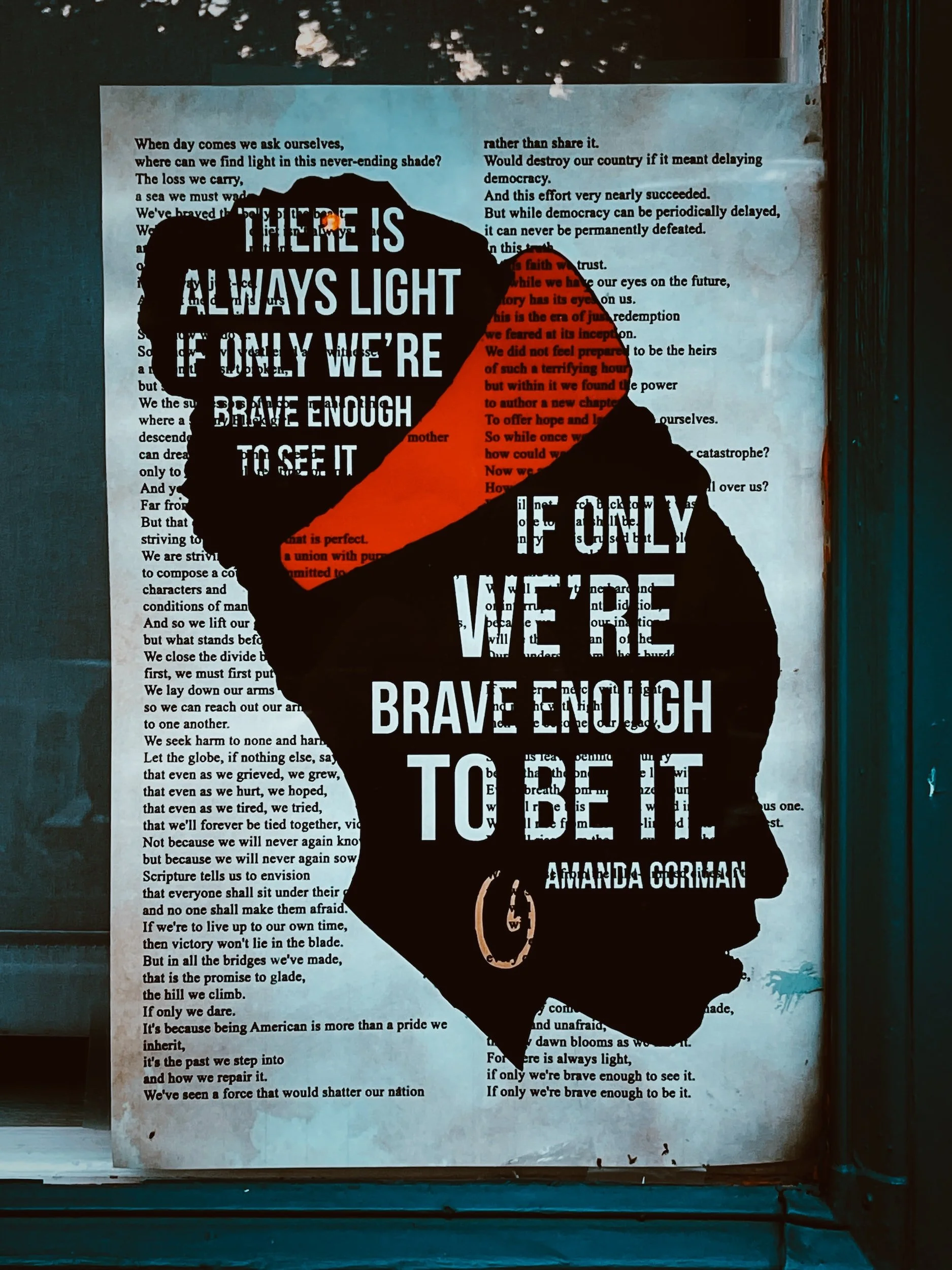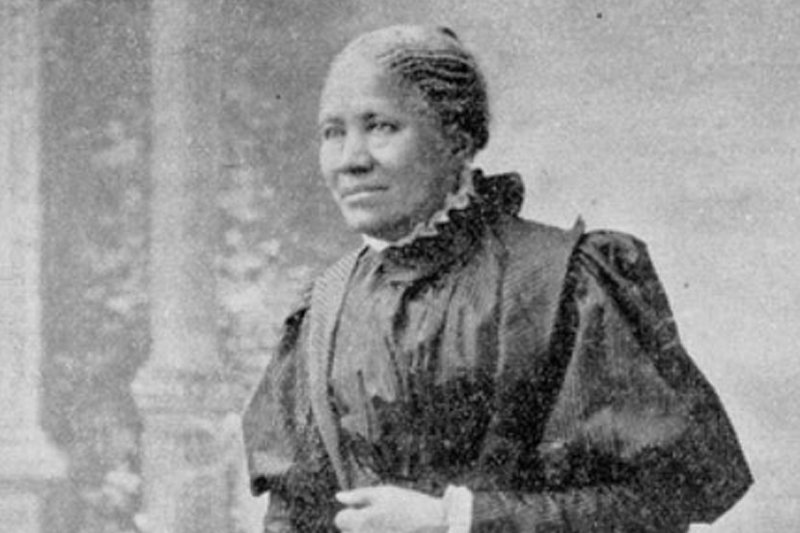
Poetry
Francis Harper, 1825-1911
“But two things are wanting in American civilization - a keener and deeper, broader and tenderer sense of justice - a sense of humanity, which shall crystallize into the life of a nation the sentiment that justice, simple justice, is the right, not simply of the strong and powerful, but of the weakest and feeblest of all God's children.”
Francis Harper, A Brighter Coming Day
As the first African American woman to publish a short story, Francis Harper contributed to the Black tradition in the realms of poetry as well as education. Born into a free family, Harper was raised by her uncle who was an activist, abolitionist, self-taught medical practitioner, and founder of the Black literary society and the school, Watkins Academy for Negro Youth.
While studying at the Watkins Academy in her twenties, Harper took time out of her job as a seamstress to write numerous poems which were published in her first collection, Forest Leaves. The book was published by James Young, a printer at the corner of Baltimore and Holliday streets. No material copy of the publication survived but it is assumed that it would have been published before 1851, the year Harper left Baltimore. Parts of Forest Leaves were recovered by Johanna Ortner who notes that “Harper stays within the limits of female respectability by writing about religion, which is not surprising for a young, free black woman who was consciously defying societal norms by publishing her literary works for a potentially broad audience” (Ortner, 2015). Many of these poems were revised and republished in her later works.
“That Blessed Hope”
Oh touch it not that hope so blest
Which cheers the fainting heart,
And points it to the coming rest
Where sorrow has no part.
Tear from heart each worldly prop,
Unbind each earthly string;
But to this blest and glorious hope,
Oh let my spirit cling.
It cheer’d amid the days of old
Each holy patriarch’s breast,
It was an anchor to their souls,
Upon it let me rest.
When wand’ring in the dens and caves,
In goat and sheep skins drest,
Apeel’d and scatter’d people learn’d
To know this hope was blest.
Help me to love this blessed hope;
My heart’s a fragile thing;
Will you not nerve and bear it up
Around this hope to cling.
Help amid this world of strife
To long for Christ to reign,
That when he brings the crown of life
I may that crown obtain. (Harper, 1851 )
Engraved portrait of Frances Ellen Watkins Harper
Source: The Underground Railroad by William Still. (Photo by Library of Congress/Corbis/VCG via Getty Images)
Francis Ellen Watkins Harper
Source: The Weekly Challenger
Orphaned at the age of three, she grew independent because of her work as a teacher. She moved out of the South and later settled in Philadelphia where she contributed to the antislavery movement. “[T]he passage in 1853 of a law in Maryland forbidding free blacks to enter the state without risking capture and sale only heightened her commitment” tpo the movement (Ammons and Watkins, 1985).
In 1859, Harper published her first short story titled “The two offers” which comments on the womanhood of two cousins whose choices of husbands determine their fate. Speaking of “the true woman”, Harper iterates:
“Talk as you will of woman’s deep capacity for loving, of the strength of her affectional nature. I do not deny it; but will the mere possession of any human love, fully satisfy all the demands of her whole being? You may paint her in poetry or fiction, as a frail vine, clinging to her brother man for support, and dying when deprived of it; and all this may sound well enough to please the imaginations of school-girls, or love-lorn maidens. But woman—the true woman—if you would render her happy, it needs more than the mere development of her affectional nature. Her conscience should be enlightened, her faith in the true and right established, scope given to her Heaven-endowed and God-given faculties.” (Harper, 1859, p. 1928)
Harper’s activism bloomed after she addressed the eleventh National Women’s Rights Convention with her famous speech, “We are all Bound up together” (1866). Speaking for the diversification of the Feminist movement, Harper stated,
“While there exists this brutal element in society which tramples upon the feeble and treads down the weak, I tell you that if there is any class of people who need to be lifted out of their airy nothings and selfishness, it is the white women of America” (Harper, 1866, p. 219).
She later engaged with the tales of enslaved African Americans who escaped into the free states through the underground railroad. She befriended William Still, the author of the historic novel The Underground Railroad (1872), who sheltered her as she worked on publishing her poetry. She married Fenton Harper in 1860 who died four years later. She spent the rest of her life traveling and supporting herself with her activism, writing, and lecturing before her death in 1911. Her most notable publications include Poems on Miscellaneous Subjects (1854), Sketches of Southern Life (1872), and Lola Leroy (1892).
Frances Harper was described by Journalist Grace Greenwood as a “‘bronze muse,’ poised and eloquent, with a voice that could be heard in the back of any hall without her having to raise it” (Bacon, 1989, p. 27-28). Her prose and poetry are abundant with themes of anti-slavery, anti-racism, upliftment of women, independence, and education.
Selections
“Oh! how shall I speak of my proud country’s shame?
Of the stains on her glory, how give them their name?
How say that her banner in mockery waves—
Her “star-spangled banner”—o’er millions of slaves?”
— from the poem “Eliza Harris”
“Oh! When ye pray for heathen lands,
And plead for their dark shores,
Remember Slavery’s cruel hands
Make heathens at your doors!”
— from the poem “Bible Defense of Slavery”

